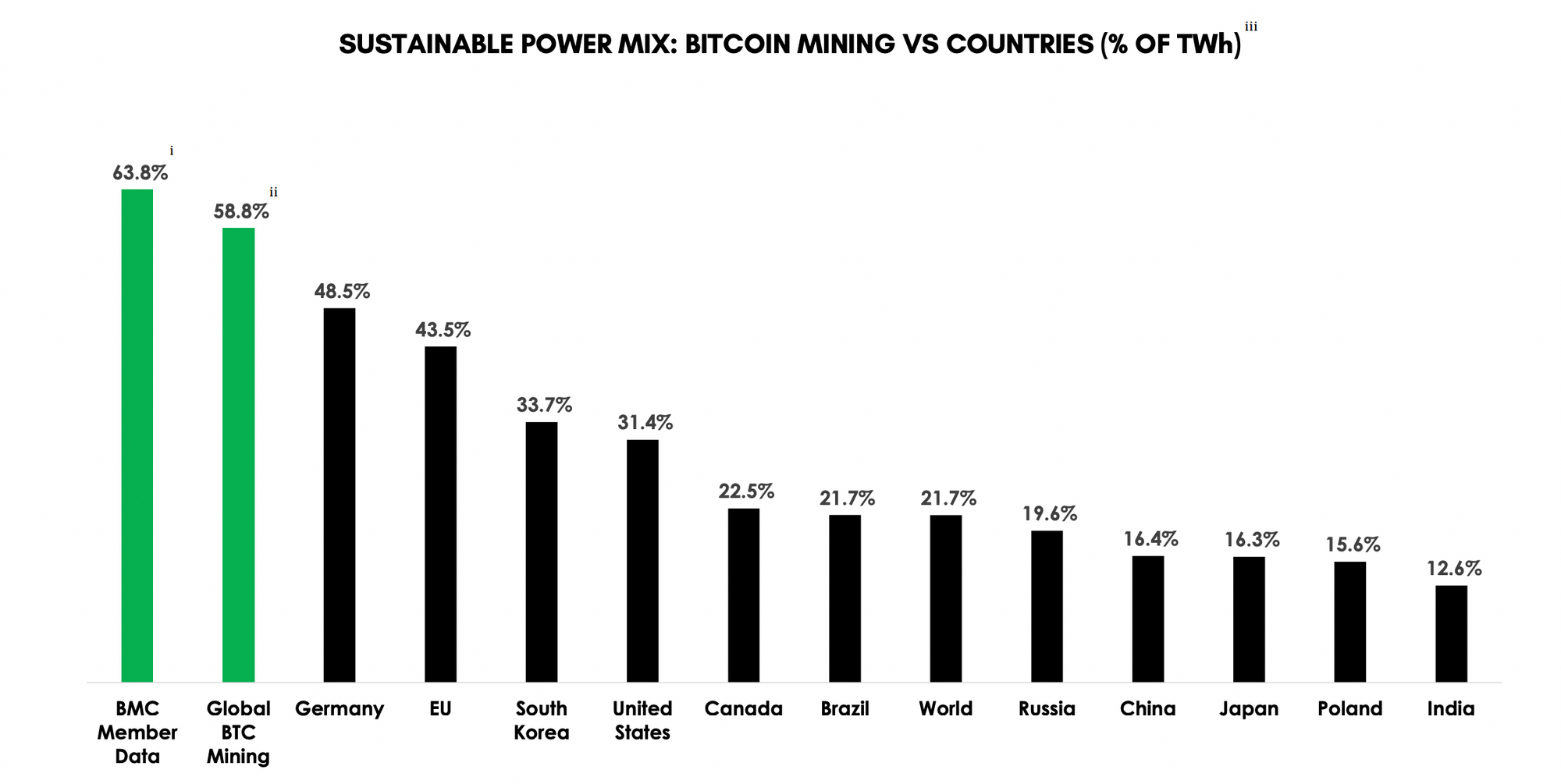Is Bitcoin bad for the environment?

The reality behind blockchain energy use and cryptocurrencies’ environmental impact.
Bitcoin is on the hook again for its nocuous effect on our planet and this time the novel Ordinals Protocol is to blame. In our last Insight, we covered how the Ordinals Protocol is changing the culture of Bitcoin, but this cutting edge inscription process comes at a cost. On February 1, 2023 BTC mining company Luxor mined the largest Bitcoin block ever at 4MB, most of which was taken up by an ordinal. The energy it took to mine the Ordinal was roughly equivalent to the carbon footprint of mining an entire Bitcoin block. To put that in perspective, one bitcoin transaction is often compared to using as much energy as mining 9 tonnes of gold. Ordinals can therefore dramatically increase the energy consumption of bitcoin.
Ordinals is only the latest innovation making environmentalists balk at crypto’s environmental impact. From the 2022 White House report that cited crypto’s significant environmental impacts, to numerous Greenpeace campaigns pressing for Bitcoin’s transition to a low-energy protocol, cryptocurrency has garnered an environmentally unfriendly reputation in the public eye. The energy intensive proof-of-work protocol in particular is consistently under fire for using as much energy annually as a small country. This pushback has led to Senator Markey’s transparency bill and the Biden administration’s letter urging the disclosure of Bitcoin mining pollution. However, the narrative of Bitcoin’s environmental destruction could overshadow the positive implications of widespread adoption.

A greener blockchain
To revise this narrative, crypto innovators are creating actionable solutions to create a more environmentally friendly Bitcoin. Organizations like the Crypto Climate Accord, established in 2021, and the Climate Chain Coalition focus on decarbonizing cryptocurrency energy sources with the goal of transitioning the entire crypto industry to net-zero greenhouse gas emissions by 2040. In addition, a group led by Blockstream and Block Inc. have begun construction on a solar mining facility powered by Tesla Solar PV and Megapack. This initiative reflects a general shift towards renewable energy use in mining. Beyond these initiatives, there have been improvements in total energy use. The Bitcoin Mining Council reported a 16% increase in the global Bitcoin network’s technology efficiency from Q4 2021 to Q4 2022 and a higher sustainable power mix than countries such as Germany, United States and Canada.

While many organizations focus on the important work of renewable energy, Ethereum’s switch from proof-of-work to proof-of-stake sets a precedent for lowering emissions, as the proof-of-stake mechanism uses significantly less energy. Through the merge, Ethereum has decreased energy use by ~99.5%.

Proof-of-stake blockchain technology could actually provide a solution to some environmental concerns, due to its ability to monitor, incentivize, and decentralize emissions tracking in fields like natural resource management. Even the 2022 White House report acknowledged that blockchain technology could play an important role in distributed energy resource coordination and supply chain management.
What’s really the problem?
While criticism of Bitcoin’s energy use is valid and has led to actionable climate objectives, the larger discussion is our energy systems as a whole. Cryptocurrency gets a bad reputation for its energy use while the infrastructures required to support banks, the U.S. dollar, and even streaming platforms are not much better. A 2022 study conducted by Valuechain founder Michel Khazzaka found that Bitcoin consumes less energy than our classical electronic payment systems. Currently, Bitcoin’s energy use is lower than the mining of copper and zinc, the world’s residential air conditioning systems, and data centers. And yet, these activities garner significantly less criticism in mainstream discourse. Ultimately, cryptocurrency uses energy, but it is important to consider context. The fact is, many processes use high amounts of energy and the most productive path forward is rationally weighing the environmental costs of cryptocurrency use against the social and economic value cryptocurrency adoption brings to society.
It’s all about perspective
From making proof-of-work processes more environmentally friendly, to cutting energy use by switching to proof-of-stake, there are significant attempts at improving blockchain’s environmental impact. Whether a person believes cryptocurrencies' energy use is justifiable or not, largely depends on the perceived utility of the technology. It is easy to see cryptocurrency as an unnecessary energy drain if you do not believe it is a worthwhile innovation to begin with. However, if you think cryptocurrency will play an important and positive role in shaping our future, then we must compare it to the costs of benefits of the current financial and technological systems already in place.
N+1 Insights is meant for informational purposes. It is not meant to serve as investment advice.
